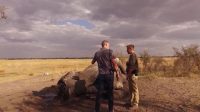
We Can Stop the Poaching of Big Cats. Here’s How.
Just seven years ago in India’s magnificent Manas National Park, there were no tigers to speak of, just a few remnants of a population wiped out after decades of civil unrest that left the park’s wildlife vulnerable to persecution.
Now there are more than 30 tigers in Manas, a remarkable recovery achieved in record time thanks to a robust collaboration among the Indian Forest Department, local and international nongovernmental organizations, and law enforcement agencies, all working together to secure the park and protect it from poachers.
The success in Manas shows that stopping poaching at the source can bring tigers back from the brink.… Seguir leyendo »




